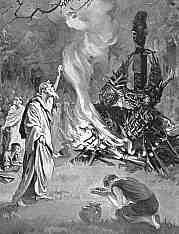
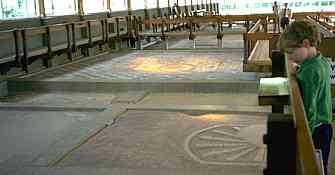
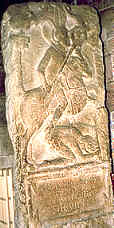

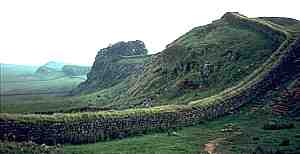
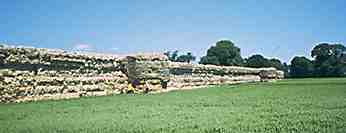
If you are looking at this page without frames, there is more information about medieval writing to be found by going to the home page (framed) or the site map (no frames).
| Literate English | |||
| The languages used by the people who occupy the land we call Great Britain, or the United Kingdom, over the centuries have a fascinating history, as the place was subjected to a series of invasions by peoples of different linguistic origins. While each invasion had a different linguistic consequence, it is important to bear in mind that until recent times, we can only trace the result through its influence on the written record. In the medieval era, that did not represent the whole of life. | |||
| The peoples who occupied what we now call England, as well as Ireland, Scotland and Wales, before the Roman invasions, spoke what we might now call Celtic languages or Gaelic, in two basic families related to Welsh and to Irish versions. Related languages were spoken in France in the area known as Gaul. Our knowledge of these languages is confined to what is known of the versions that survived in Wales, Scotland, Ireland, Cornwall and Brittany into later centuries, as the early inhabitants left no written record. What is known about them from written texts is derived from the writings, in Latin, of Roman observers. |
 |
||
| Barbarous Druidical punishments, as depicted in a schoollbook and described by Julius Caesar. | |||
| The Roman invasion resulted in the establishment of orderly military camps, roads and urban settlements, as well as some gracious country villas, but in a very underpopulated country there was plenty of room for the locals to continue their quiet rural life. Some natives looking to get on must have become Romanised, but it seems that in many ways the two populations kept themselves somewhat separated. The literate language was Latin, but many military personnel came from all parts of the Empire and must have had an assortment of other languages. There is no way of knowing what effect this might have had on local dialects. The imagination can run riot on what creoles may have been spoken in the marketplaces, but that is not scientific, so we must not speculate. | |||
 |
The Roman palace at Fishbourne, excavated and preserved to show its civilised splendour, may have belonged to a British native occupying high office under the invaders. | ||
| The presence of written Latin among the general Roman populace is attested by inscribed memorial stones and such interesting finds as the Vindolanda tablets. They shed no light on an absorption of Latin by the local populations in the areas of occupation. As a result of later events, the Gaelic languages survived only in areas outside the main Roman influence. | |||
 |
Two examples of Latin in the landscape. At left, the tomb of a Roman standardbearer now in Hexham Abbey, with carved inscription beneath the carved figure on his horse. At right, a carved inscription on a Roman altar in the museum at Corbridge, excavated from the area in the vicnity of Hadrian's Wall. |
 |
|
 |
|||
| Hadrian's Wall near Housesteads Fort. | |||
| North of the area of Roman control, symbolically if not precisely divided by Hadrian's Wall, were the people the Romans called the Picts. Such minuscule traces of their language remain that its nature is not really known, although analysis of such tiny shreds as place and personal names have suggested that it was related to the Welsh family of Gaelic, with possibly some remnants of something even older. In fact, the whole ethnic and linguistic relationships between the various groups of people of the north is not elucidated. Meanwhile, the soldiers who guarded the northern frontier were sufficiently literate to send home private letters in Latin. | |||
| If you want to know what they wrote home about, take a look at Vindolanda Tablets Online. | |||
| At the time when the Roman Empire started to crumble at the edges, there were significant and complex movements of peoples around Europe. These have been styled barbarian invasions, but that invokes an image of warlike hooligans deliberately assaulting the bastions of civilisation, and reflects a distinctly Roman perspective (or perhaps even propaganda, but that sort of thing wouldn't happen these days). The forces of necessity and pioneering urges that drove these movements were no doubt intricate and interactive. The Romans were aware of the interests of Germanic groups on Britain and initially set up some defences, but then withdrew their infrastructure due to troubles closer to Rome. As well as leaving the so-called ancient Britons to their fate, they must also have left others from around the Empire. There is a legend, based on the flimsiest of written historical evidence, about a fellow called Arthur, who had a Roman name and won a mighty battle against the invaders. | |||
 |
|||
| Saxon shore fort of Burgh Castle, built by the Romans to defend against the invaders, but abandoned like the rest of the place. | |||
|
|
|||
|
If you are looking at this page without frames, there is more information about medieval writing to be found by going to the home page (framed) or the site map (no frames). |
|||